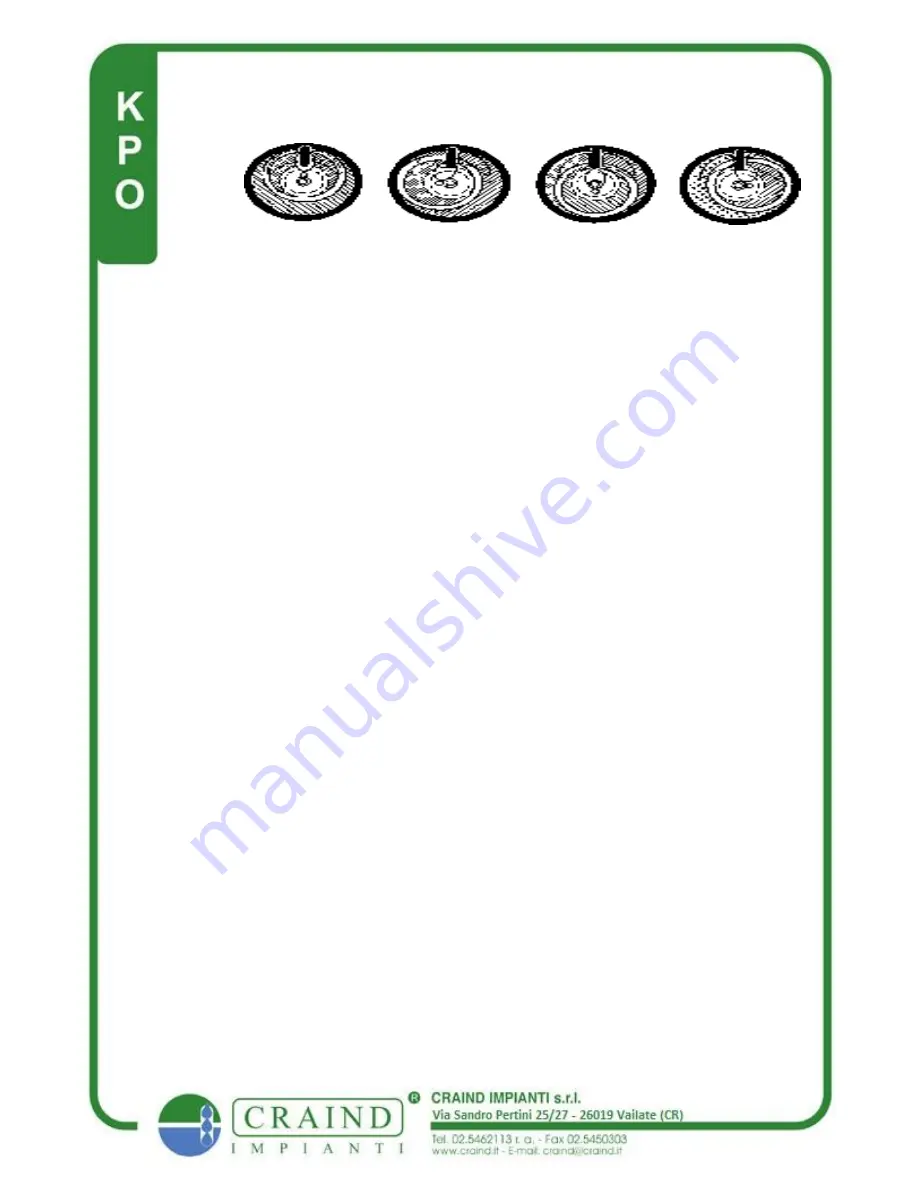
CYCLE OF OPERATION
FIG.1
The piston is over the inlet port, the inflowing liquid has
entered the incide wall of the piston and is causing it to start
its semi-rotary movement, sliding down the division piece,
displacing the neutral liquid which becomes the out owing
liquid as it is expelled through the outlet port.
FIG.2
Shows the above operation taking place with the inflowing
liquid both inside and outside the piston
FIG.3
Shows the inflowing liquid on the inlet ride of the chamber
with the neutral liquid on the incide of the piston and with the
out owing liquid passing to the outlet port.
FIG.4
Shows the completion of the exhaust period and the
commencement of the inlet period.
FAULT FINDING
If the metering system is not functioning correctly:
First check the operation of the indicator or control instrument
correctly:
Disconnect the signal input connections to the instrument and
simulate the pulsations of the reed switch at the meter by
intermittently short circuiting the input signal terminals at the
rear of the instrument. If the appropriate pulses are not
received on the indicating or control equipment, then these
units must be checked as described in the appropriate
instruction manual. If pulses are received and indicated then
re-connect a signal input cable.
Check that the interconnection cable is satisfactory by:
Disconnecting the other end of the cable from the reed switch
connection. Short circuit the conductors and see whether or
not pulses are received on the control equipment at the other
end of signal cable. If pulses are not received then there is a
break somewhere in the interconnection cable and it should be
replaced. If pulses are received re-connect the cable.
Pag.10

































